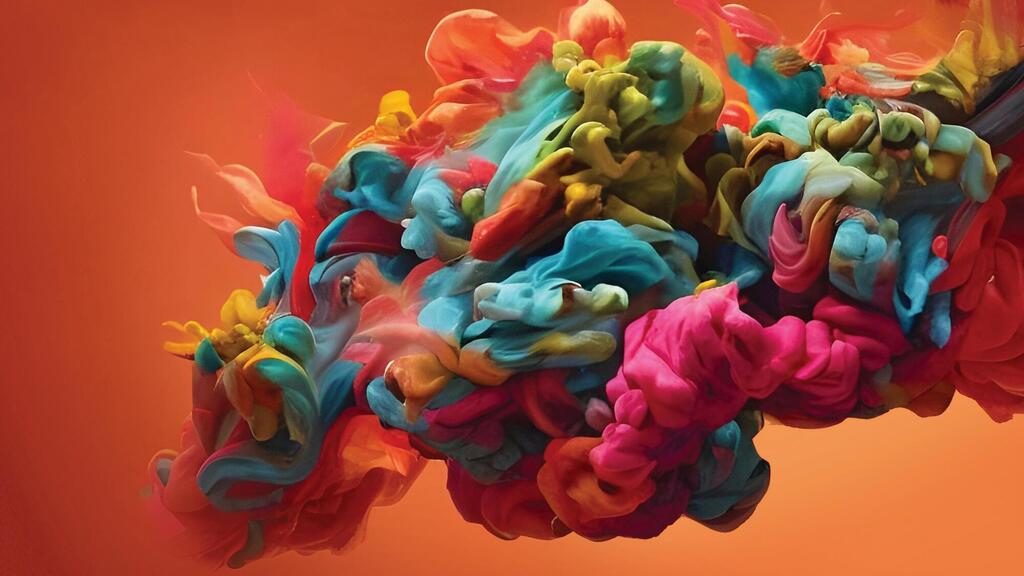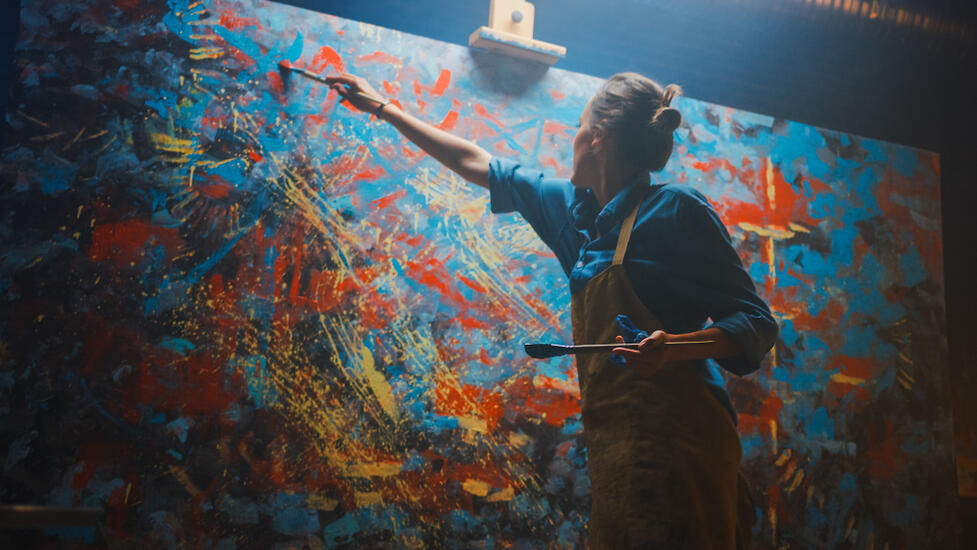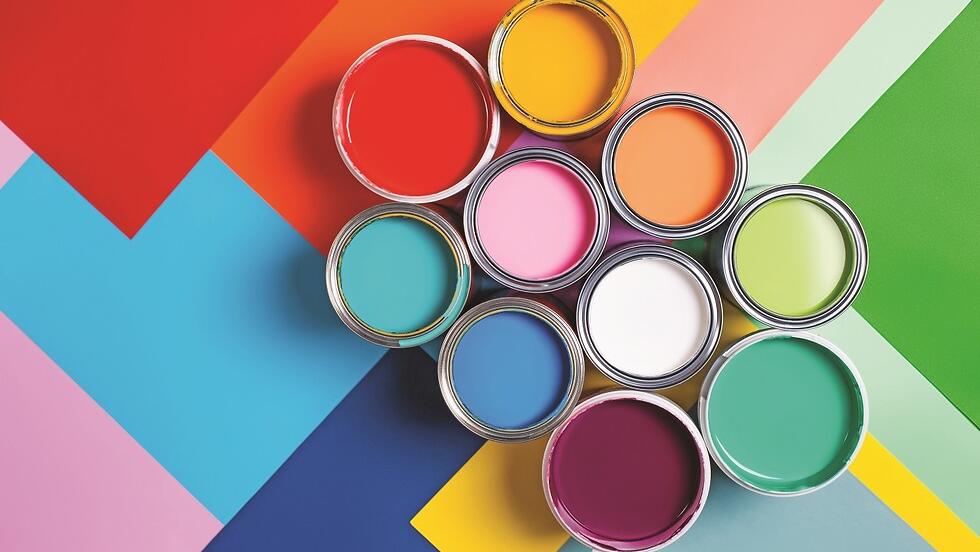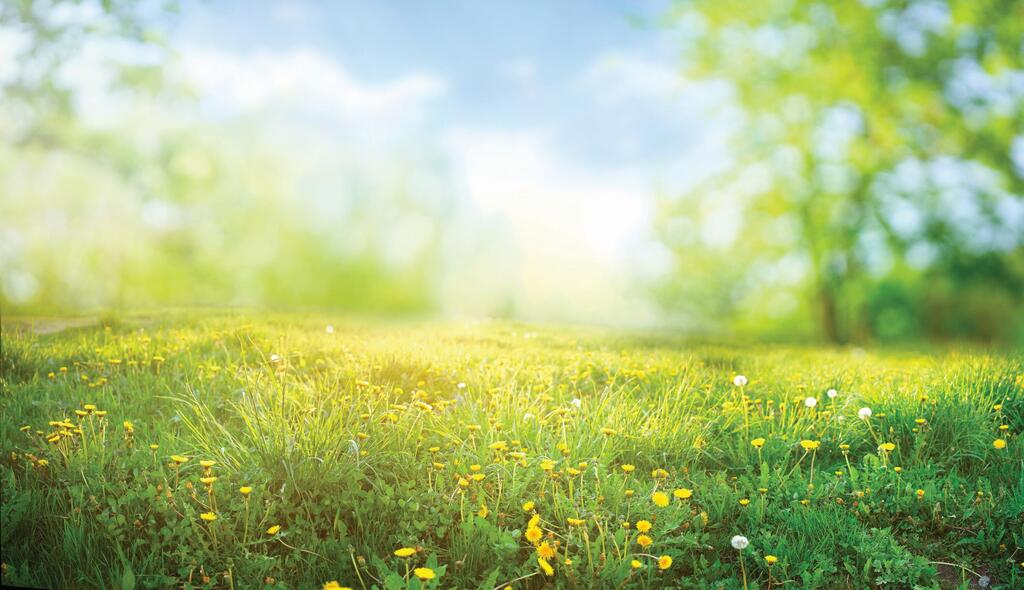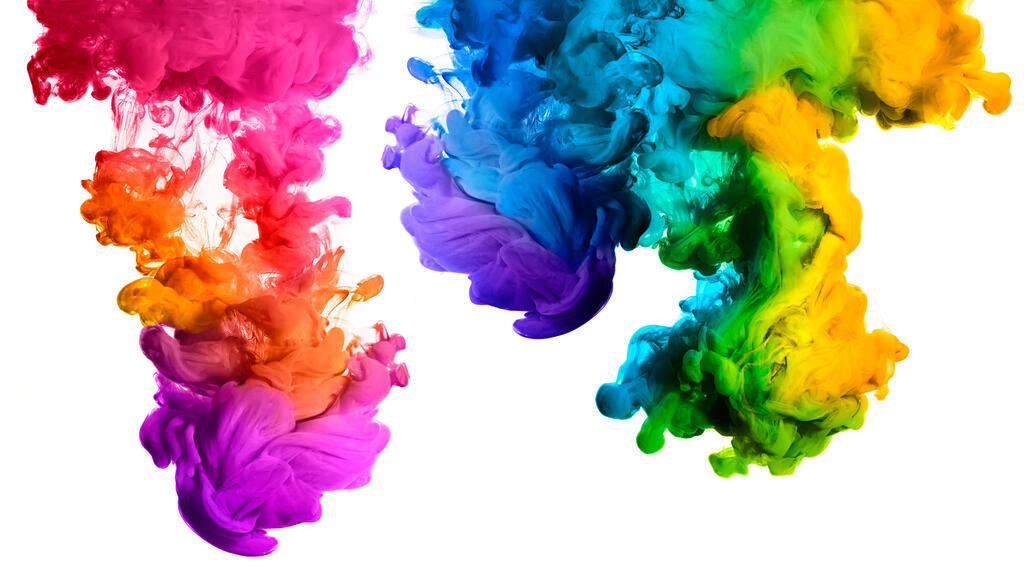Getting your Trinity Audio player ready...
Let's begin with a small mental exercise: Look at an object close to you, observe its color and think about what that color actually is and what it evokes in you.
"Color is not a real thing," explains Professor Ariel Chipman, a senior researcher from the Department of Ecology, Evolution and Behavior at the Hebrew University of Jerusalem.
Read more:
"It is highly subjective and, in fact, it is an interpretation by our brain of different wavelengths of light. Color is essentially different wavelengths of light, and different objects reflect light at different wavelengths, which our brain interprets as colors. To truly understand this, one must understand why we perceive light at all," Chipman says.
The ability to perceive photons, or light, is one of the oldest senses. Today, most living organisms – from bacteria to humans – have some ability to see light, but the ability to form a detailed image and perceive high-resolution vision, as humans do, is extremely rare in nature. Most animals see in certain wavelengths of light, but there may be no overlap between these wavelengths.
"There is a basic molecule called opsins (also known as photoreceptors), which captures the photons and transmits the information to the nervous system," explains Chipman. "Most organisms have only one type of opsin capable of capturing one wavelength, meaning they are limited to one color. Humans have three types of opsins that enable complex vision – trichromatic vision. However, insects have a polychromatic vision, which means they have many more different receptors, and they can see colors at a level that we can't even imagine. Their interpretation of color and their world is completely different."
Are the opsins located in the eye?
"Not necessarily. In humans, opsins are located in the eye, but in some organisms, for example, opsins are also found in the skin, allowing them to camouflage themselves in the environment by changing color."
How does color actually help nature?
"Usually, when we think of color in nature, we think of flowers. But they are relatively recent inhabitants on Earth, and their appearance can be dated back to approximately 100 million years ago, about 400 million years after the emergence of complex organisms. Flowers appeared after plants understood, through evolution, that it was preferable not to rely on the wind to spread their pollen but to use a messenger. This messenger is, of course, insects, and flowers developed mechanisms to attract pollinators. They actually achieve this through color that attracts those insects."
"If that's the case, why do certain colors calm us down while others cause anxiety?
"Most of nature is green and blue. These are the 'default colors' of the world and therefore, they are soothing colors for us. However, a completely different evolutionary story has taken place for red, yellow and black, turning them into warning colors. Most predatory animals use them, and so do we humans. Evolutionarily, this combination of colors grabs attention or creates a warning."
Red on the psychologist's couch
But it turns out that, like in many other cases, in the field of color, humans have learned to harness evolution to their advantage. In fact, there is a whole psychological theory behind color that has examined and studied how colors influence our behavior.
The seeds of this color theory were planted in 1810 when Johann Wolfgang von Goethe published his book "Theory of Colors," in which he described how colors affect our emotions. His theory was met with much coolness in the scientific community and his ideas were dismissed on the grounds that they had no scientific basis. What they didn't know then was that this theory would continue to ignite the imagination of many researchers, and later serve as a foundation in the field of color psychology, which it still does to this day.
One of those researchers is Professor Kurt Goldstein, a German neuropsychiatrist. In 1942, he decided to test the influence of gazing at two colors – red and green – on five of his patients. He was astonished to discover that red elicited disease symptoms in them, while green generated calm and tranquility. Once again, the scientific community did not get excited. It dismissed the idea outright, claiming that not enough experiments had been conducted on the subject.
But the idea was never abandoned and, indeed, about 20 years later, in the 1960s, the long-awaited breakthrough arrived. During those years, treatments for newborns with jaundice began using lights in various shades, and it was found that white light and blue light were more effective in treating these infants than bloodletting. Subsequently, various studies were conducted to examine the effects of colors on a variety of conditions, including seasonal depression, anorexia and even jet lag. Today it is already known that the theory of color is well-founded, and it tends to be divided into three areas: physiological effects, behavioral effects and color preference.
If you ever wondered why we have a favorite color, let's start with the end – we all love blue. We may not be fans of blue and it may not be our first choice, but a study conducted by Crayola in 1993 was among the first to show that blue is the favorite color for many of us.
In that study, which included hundreds of children, blue was chosen as the favorite color, followed by green and red. Seven years later, the company decided to repeat the study, but this time the researchers added several shades of each color. Again, they arrived at a top six, with no less than five different shades of blue.
And not only that; in fact, each additional day in the world brings us closer to loving blue more and neglecting bolder colors. This is evident from a study published in the Psychonomic Bulletin & Review journal in 2013, which showed that children tend to change their color preferences, while adults remain quite set. The researchers asked the participants, both adults and children, to look at eight different colors under varying lighting conditions. It found that while the children's heads kept moving and their fixation on a specific color was not visible, the adults quickly settled on a favorite color.
Beyond that, every day in our childhood we accumulate experiences, and our brain connects colors to those experiences. For example, colors like red, pink and yellow are associated with joyful experiences, while blue and gray often are linked to negative experiences. How strong is this association? In one study, 330 children were asked to write the word "nice" and the word "disgusting" in any color they chose. The majority of children wrote the word "nice" in their favorite color, and almost all of them wrote the word "disgusting" in black or gray.
And what about adults? Studies show that just as adults love blue, most of them are repelled by brown. The preference for blue seems to remain consistent throughout adulthood, while the aversion to brown is also common.
Green light for pain
The field of medicine also tries to harness the power of color, and there is an entire field called chromotherapy that deals with using color for therapeutic purposes. For example, in a study published in 2020 in the journal Cephalalgia, researchers from the University of Arizona examined two groups of participants – one with moderate-frequency migraines and one with high-frequency migraines.
In the study, which lasted 10 weeks, the researchers asked the participants to install a green LED light in their homes and sit next to it for two hours each time they experienced a migraine attack, instead of being in a dark room. The results were nothing short of impressive. The group suffering from moderate-frequency migraines reported a reduction of about 70% in the number of attacks, and the group suffering from high-frequency migraines reported a reduction of about 60%.
In another study conducted at Duke University and published about a year ago, researchers sought to examine the effect of the color green on fibromyalgia, a condition characterized by chronic and widespread muscle pain with no apparent inflammation as its source. The researchers divided the participants into three groups: a group instructed to wear glasses with blue lenses, a group with green lenses and a group with red lenses. All participants were asked to wear the glasses for four hours a day for two weeks.
The researchers were astonished to discover that participants in the group with green lenses reported a significant decrease in anxiety related to pain, four times more than the other two groups. The exact reason for this positive effect of the green color on pain is still not entirely clear, but the researchers speculate that evolutionarily there might be a neural pathway in our brains that "suppresses" pain when the green light is absorbed by our eyes.
However, it turns out that it's not only the color green that has a positive impact on our health. A study conducted in China and published in 2012 in the Journal of Athletic Training showed that red light can improve our sleep quality. The study involved 20 soldiers in the Chinese army who were divided into two groups: One group was exposed to red light for half an hour before sleep each day, while the other group was not. After 14 days, the group exposed to red light showed a significant improvement in the PSQI index, a measure of sleep quality, and an increase in levels of melatonin, the "sleep hormone," in their blood samples.
Monochromatic mood indicators
Not only are pain and sleep influenced by colors, but several studies conducted in recent years indicate that color also has a significant impact on our mood. For example, a study published in 2020 in the journal Psychological Science examined the influence of color on mood among 4,598 participants from 30 different countries. It found that 51% of participants associated black with sadness, 68% associated red with love, and 36% claimed that brown evoked disgust in them.
Furthermore, studies also show that color therapy, or chromotherapy can help alleviate anxiety disorders, especially through the use of blue and green colors.
For example, a study published in 2020 in the journal Fatigue: Biomedicine, Health and Behavior showed that, among nurses in an intensive care unit, chromotherapy significantly reduced the risk of post-traumatic anxiety attack and fatigue as a result of mental exhaustion. The nurses were divided into two groups: in one group, all the panels in the department were replaced with decorative panels in blue, green, yellow and orange colors. Accessories in the same colors also were provided, and each nurse received professional chromotherapy treatment. No intervention was performed in the second group. Both groups were assessed for three months, and at the end of the study, the group that received the color therapy showed a significant improvement in fatigue and psychological burden compared to the control group.
The psychology of color is also used in the world of marketing and advertising, where colors have been used for years to manipulate our brains in an evolutionary way. For example, red is primarily used by food or love-related businesses, blue is used for men's products or bathroom and sanitation products, green is used for health-related advertisements, and white is used for pharmaceutical advertisements.
Some also harness the psychological influence that color has on our brains to improve the quality of our lives, which we encounter daily without even being aware of it.
"We believe that in a city and urban space, color and nature are of great importance," explains Yoav David, architect of the Tel Aviv-Yafo municipality.
"Urban furniture such as benches, railings and traffic lights must have very calm shades. Therefore, most of these elements will usually be in a gray, monochromatic and uniform tone. Over the years, we have understood that the principle of calm shades works in all neighborhoods of the city, even though they are very different from each other. In this respect, what is true for the northern neighborhoods is also true for the southern and central neighborhoods of the city. This creates uniformity, tranquility and calmness in terms of data overload in the urban space."
How did you come to this decision?
"For many years, every project thought it was unique and special, and that's how we found a colorful mosaic in the city that changed according to trends and created a data overload in the urban space. Therefore, at a certain stage, we decided to align and create calm tones. Even the playgrounds, which were previously very colorful, we tried to soften using delicate wood colors. Over time, we transitioned to a more subtle and less childish color palette."
What significance does color have when you are planning a new project?
"The city is full of activity, noise and visual clutter. It contains advertisements and display windows that can create an overload on the human eye, so we want to create calm and tranquility. Tel Aviv, for example, has been known for years as the White City and has also been recognized as such by UNESCO, so we decided to continue along that line. Aside from a few public buildings that we allowed to go 'crazy' in terms of color, the color palette of residential buildings is calm and bright."
So, how do you introduce color to the city without making it chaotic?
"We don't limit the urban nature at all; instead, we encourage the creation of gardens and parks in the city that shape the urban space with greenery. We also encourage tree planting and shrubs in neighborhoods and try to bring color to them through nature."


